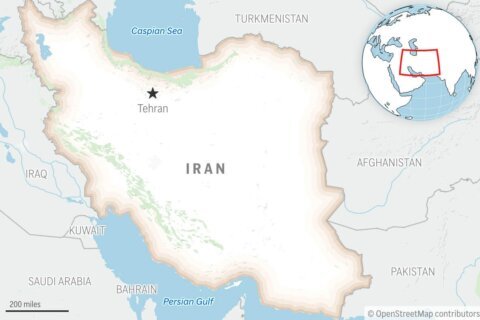Consumers have grown more comfortable managing every aspect of their daily lives with their mobile devices. More than just communication devices, smartphones allow users to control their household appliances, access media and see who is knocking on the front door. If there is a chore, there is probably an app for it.
This is also true for your personal finances, where there are financial apps that will help you save money, stick to a budget, pay a friend for a meal and even make and manage investments. Often, these apps are free. When it comes to your financial data, security and privacy should be primary concerns. But financial apps can require detailed information about your finances, access to your credit cards and even access to your bank accounts. Can you trust a free app with your banking records? What are they doing with your data? How do these free apps make money?
Read on for the hidden costs of managing your money through a free finance apps.
[Read: 10 Ways to Keep Your Phone Safe.]
Financial apps provide numerous benefits. Financial apps are a convenient way to take control of almost any aspect of your finances. If you are just starting out, you can use an app to set savings goals or put money toward a vacation. If you share expenses, you can make and track bill payments. With the swipe of a finger, you can get an overview of your savings and investments. There are apps that can help you curb spending or track work expenses. There are apps that make a game out of building savings to keep you engaged. Other apps allow you to take a deep dive into your financial data.
In order to work effectively, these apps will require some access to your finances. As with any new app, but especially with financial apps, you should practice good security habits. In addition to making sure your device is password-protected or that the app allows for biometric scanning to unlock, take a few minutes and do some research on the app. A quick internet search should give you a sense of whether you can trust the company. What kind of security does it use? Look for 265-bit encryption, which is the standard level for financial institutions. Is the app owned or connected to a big company? For example, the payment app Venmo is owned by PayPal and the budgeting app Mint is owned by Intuit.
[See: 10 Ways to Protect Yourself From Online Fraud.]
“Free” doesn’t mean there are no costs. If an app is listed as “free” in the app store for your device, that could just mean that the app is free to download. Apps may have a free trial period or may charge to use specific features. For example, the investing app Stash and the savings app Digit both offer free trials, then charge a monthly fee for continued use of the app. Alternatively, there is no trial period for the free version of the budget manager app Spendee, but the features are limited. Users who want to manage multiple budgets, sync the app with their bank accounts or have their spending automatically categorized will have to pay for the premium services. The drawback is that the free version of an app may not have all the features you want.
Many free apps are supported through advertising. The advertising allows the app to continue to be free while providing the advertisers with an audience who may be interested in their products. For example, the budgeting app Fudget displays a banner ad in the free version that is removed if you opt for the Fudget Pro paid version.
Some apps are free but are supported by product referrals. Instead of an advertisement, the app will display related products. For example, the credit score app Credit Karma displays targeted products based on the financial data you provide. The app doesn’t share your financial data, but it does use your data to find relevant products, such as a credit card for which you might be eligible. Credit Karma will receive a payment from the merchant for any products or services you order. While the products may be tailored to your specific financial situation, keep in mind that apps that offer targeted ads may not have referral partnerships with every merchant, so you may not be seeing every product for which you might be eligible.
[See: 10 Social Media Posts That Can Endanger Your Finances.]
In some cases, the free app is a fully featured product with no strings attached. The apps make their money from paid content or services that are not part of the main app. The business expense app Expensify offers a free version for individual users, which can be great for freelancers. They offer Team and Corporate versions that are aimed at integrating multiple uses for monthly charges. Similarly, the freelance job tracker app Tycoon offers a full suite of features for tracking jobs and client payments. It offers added functions for commissions, taxes and to directly add to your calendar from within the app for a monthly fee. Again, depending on your needs, the features behind the paywall may or may not be what you need. And once you commit to an app, you may be more likely to pay for the premium services.
Mint, one of the most popular budgeting apps, uses a combination of revenue streams. The app manages your personal finances, from budgeting to bill payment to managing your bank accounts. It runs targeted ads based on you finances, receiving referral payments from the merchants with which it has partnerships. For a fee, Mint offers a credit-monitoring service. While it doesn’t sell your data, the insights and trends it has access to from its user base have value. This anonymous aggregate data it does sell.
In the end, most users will be able to find a free app that is fully featured and meets their needs. While there may be some missing features or ad placements, the convenience and helpful tools can more than offset any issues. Most financial apps can be set up in minutes, but it can pay to do a little investigating when your finances are on the line. Knowing what features are free, what features may cost and how they protect your data will give you peace of mind to commit to that budget, contribute to a savings plan or build an investment portfolio.
More from U.S. News
8 Big Budgeting Blunders — and How to Fix Them
10 Big Ways to Boost Your Budget — Without Skimping on Your Daily Latte
11 Expenses Destroying Your Budget
The Hidden Cost of Free Financial Apps originally appeared on usnews.com







